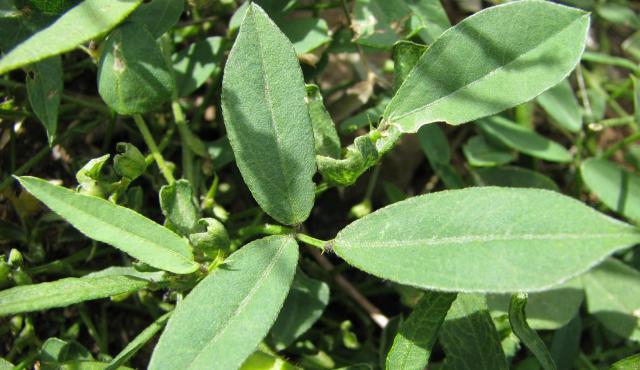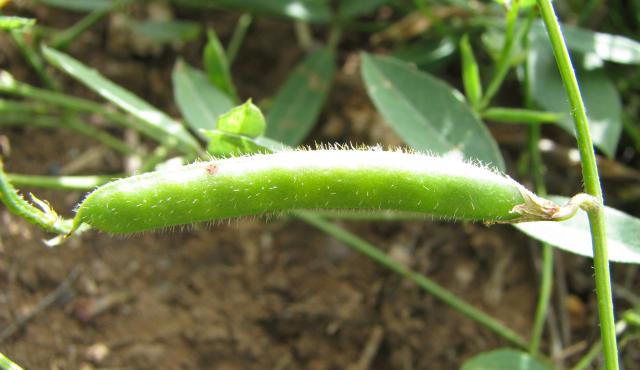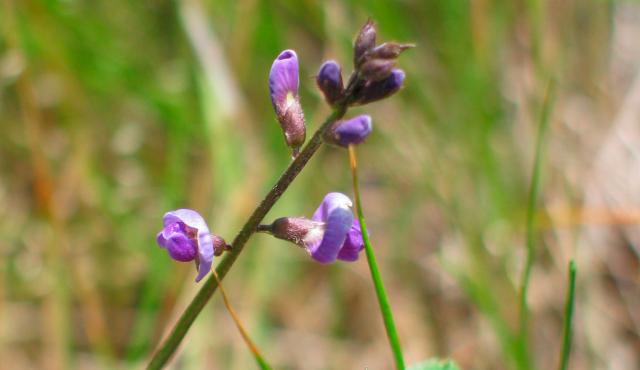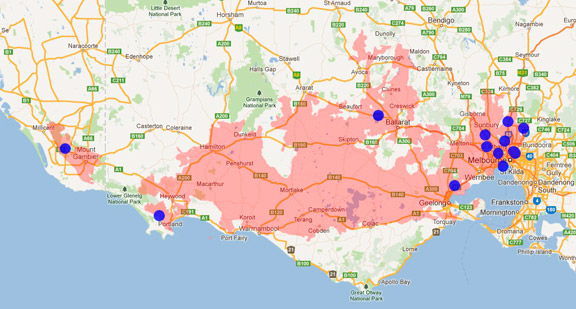A range of teacher professional learning programs will be developed to accompany the Biodiversity of the Western Volcanic Plains online outreach...



Variable Glycine
Glycine tabacina
Perennial. The stems grow from a woody, thick root-stock. Rhizobium bacteria live in this legume's root nodules and allow the plant to fix nitrogen from the air.
| Details | Description |
| Type | Scrambler or Climber |
| Group | Pea |
| Identifying Characteristics | |
| Distinctive Features | Glycine tabacina and Glycine clandestina look similar but the length of the leaflet stalks differ. In G. tabacina the middle leaflet has a longer stalk than the two either side. In G. clandestina, all three leaflet stalks are about the same length. |
| Life Form Group | Scrambler or Climber |
| Life Form Codes | Scrambler or Climber (SC) |
| EVC types | EVC 803: Plains Woodland |
| Native Status | Native to Australia |
| Taxonomy | |
| Phylum | Charophyta |
| Class | Equisetopsida |
| Order | Fabales |
| Family | Fabaceae |
| Genus | Glycine |
| Species | tabacina |

Distribution maps indicate current and historic locations where species have been sighted.
Source: Atlas of Living Australia
| Endangered Status | |
| DEPI Advisory List | Not listed |
| FFG Act | Not listed |
| EPBC Act | Not listed |
The conservation status of species is listed within Victoria and Australia.
The Department of Environment and Primary Industry (DEPI) Advisory List consists of non-statutory advisory lists of rare or threatened flora and fauna within Victoria.
The Flora and Fauna Guarantee Act 1988 (FFG Act) lists threatened species in Victoria. Under the Act, an Action Statement is produced for each listed species.
The Environment Protection and Biodiversity Conservation Act 1999 (EPBC Act) is the Australian Government’s key piece of environmental legislation, listing nationally threatened native species and ecological communities.



